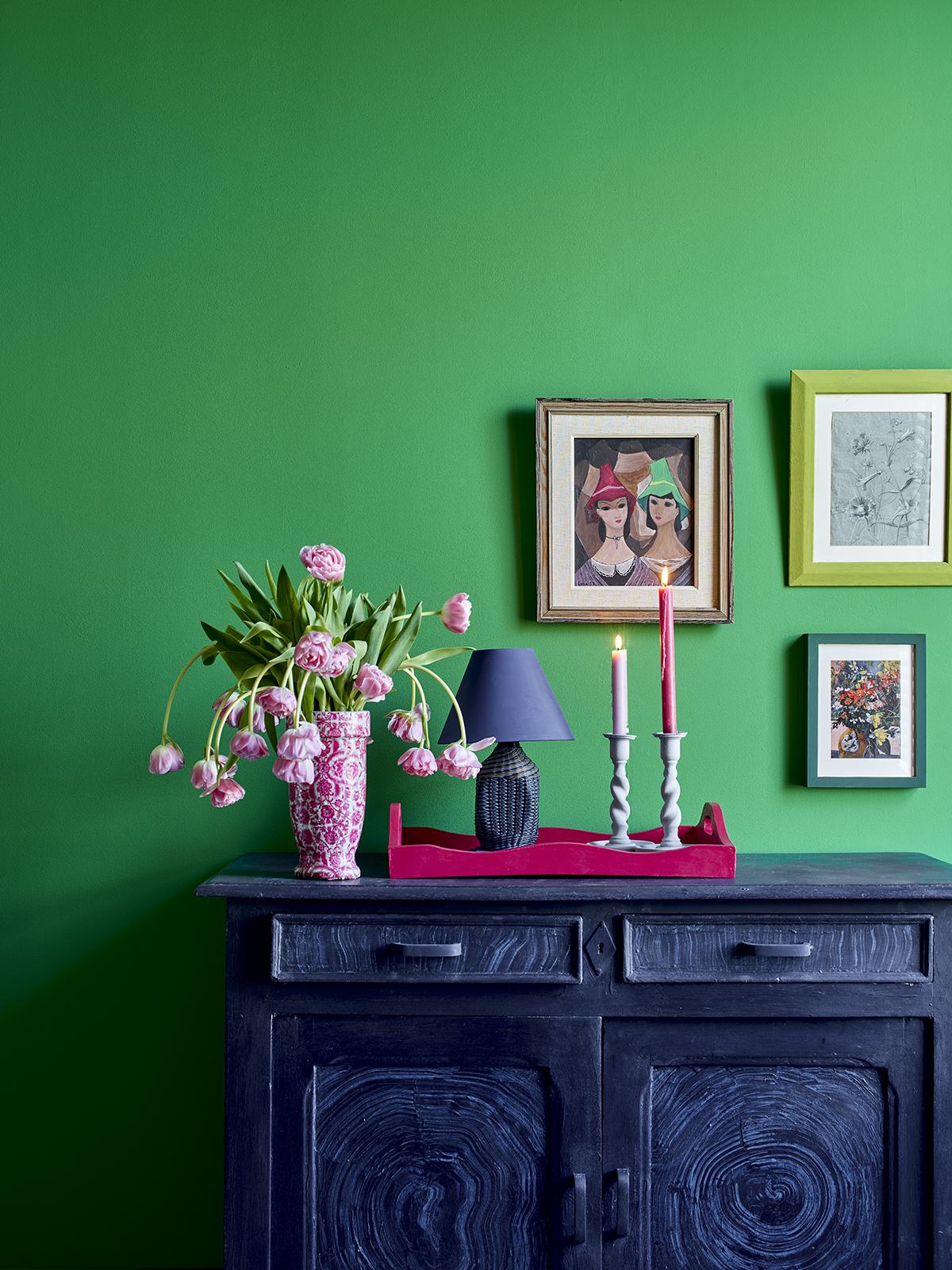Annie Sloan talks about her peripatetic upbringing and the influences throughout her life that spawned an illustrious career. Interview by Janet Gleeson
Meet Annie Sloan: entrepreneur, artist, and Chalk Paint doyenne
‘I thought that most people are creative, and that Chalk Paint was a power they could have – not like painting by numbers,’ Annie Sloan says, explaining the inspiration behind the game-changingly
versatile paint she invented more than three decades ago.
Her self-appointed mission seemed impossible – a quest for a substance that could be mixed easily, would stick to almost any surface without preparation, and absorb wax so that it could be polished to a lustrous sheen.
Miraculously, after many tweaks and trials, the eponymous Annie Sloan Chalk Paint was formulated, not only fulfilling her ambition, but establishing her as the creator of a deservedly celebrated international brand.
Perhaps Annie’s intrepid approach was linked to an unusually nomadic childhood. The first decade of her life was spent living in Australia, Africa and Fiji before the family moved to Kent. ‘It’s old-fashioned to say it, but I am a child of the colonies and feel lucky to have been exposed to such a wide range of cultural influences.’
She recalls that she especially loved living in what was then known as Rhodesia (now Zimbabwe). ‘It was so interesting, so rich: there’s an incredible mix of African, British Colonial, as well as Chinese art via Mozambique and Macau. It all influenced me and played an important part in my later career.’

Her artistic interests were also shaped by her parents. ‘My father was a journalist and interested in art. My mother was Fijian and very much a Fifties mother, with a practical approach to making and doing.’
By the time Annie went to school, her artistic enthusiasm was already entrenched. ‘I thought I was an artist and was very surprised when another girl got the art prize!’ From school it was a natural progression to study Fine Art at Reading University.
But, after graduation in the early 70s, she was uncertain what to do and joined five fellow art students to form a performance art band called The Moodies. ‘It was before the days of Punk, but we were very outrageous and got featured on the cover of The Sunday Times Magazine.’

After that she tried journalism, working for Time Out, before the allure of a career in art reclaimed her. ‘I started painting murals in houses, and that led me on to paint effects, marbling and wood graining, which got me on to the idea of painted furniture,’ she recalls.
As her reputation grew, as well as taking on painting commissions around the country, she added teaching and writing books about paint effects and interior design to her repertoire.
The concept for Chalk Paint germinated in 1990, from frustration at the limitations of the paints available. ‘I just couldn’t find anything that I really wanted to use. There were art paints that were expensive and didn’t have the body I wanted them to have, or there were acrylics, which were too strong and heavy, or house paint, with limited colours that wouldn’t do the things I wanted.

I needed to be able to manipulate it more; for it to be responsive to different ways of creating texture.’
Ignoring the fact she had no scientific background, she resolved to create her own brand of paint and found a paint manufacturer in Belgium to help her realise her ambition. ‘Sometimes ignorance helps you,’ she says.
Annie’s painting career had often taken her to grand houses, and she was already knowledgeable in traditional techniques and the pigments used in historic interiors. The colours she created were inspired by her observations.
‘I went for colours that a painter and decorator would have had in the 18th and early 20th centuries. These were key times when there were big developments. Most paint colours will be made with black mixed in, so if you add two together you get more black, and if you add white it will be slightly greyed.

I made my colours without black – more like an artist’s palette – so you can mix them well. The colours are sophisticated. It’s taken a long time to get people to understand that all this makes them special, but they really do now.’
At home, Annie defines her style as ‘a bit bohemian’ and cites Charleston, the Sussex home of Vanessa Bell and Duncan Grant, as a key influence. Her preference is for a broad range of strong colours. ‘I’m free with the paintbrush, unconcerned if it’s a bit wibbly wobbly.’

She has long been an avid collector: ‘I love jugs, paintings and prints, bowls and painted furniture,’ she says. Her homes in Oxford and Normandy are filled with finds from flea markets and fairs and her travels around the world. ‘My taste is quirky and eclectic, I have all sorts of things – it might be a shape or a colour I’m drawn to.’
She contemplates the year ahead with undiminished drive. ‘I’m working on some exciting collaborations with other people and I’m doing as much painting as possible. At the moment I’m working on the colour work for transfers and stencils.

We’re going on a tour of the US as well as holding a big paint weekend and retreats for small numbers to learn how to be painters in the UK, US and India. So I have no intention of giving up just yet. I’ve still got lots of energy – and plenty of ideas!’